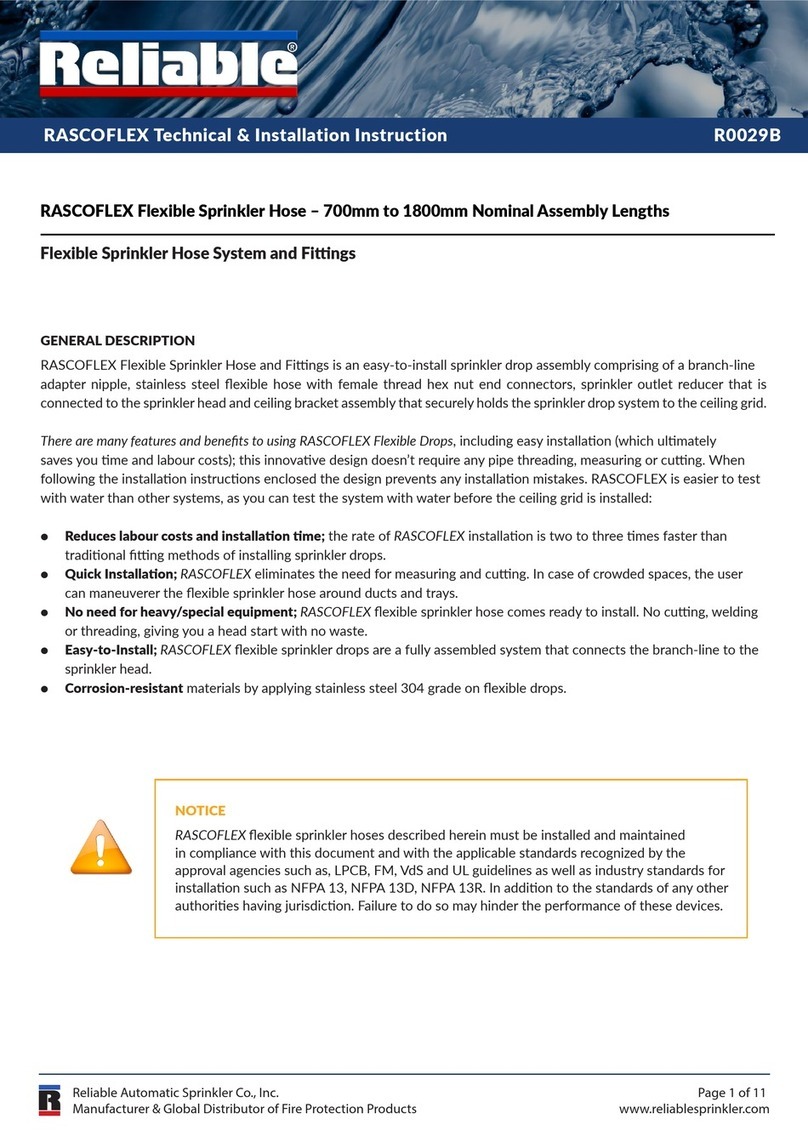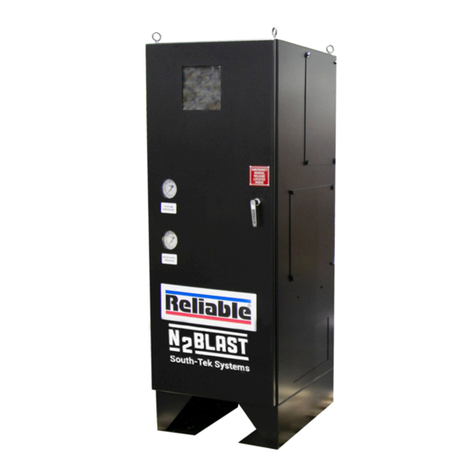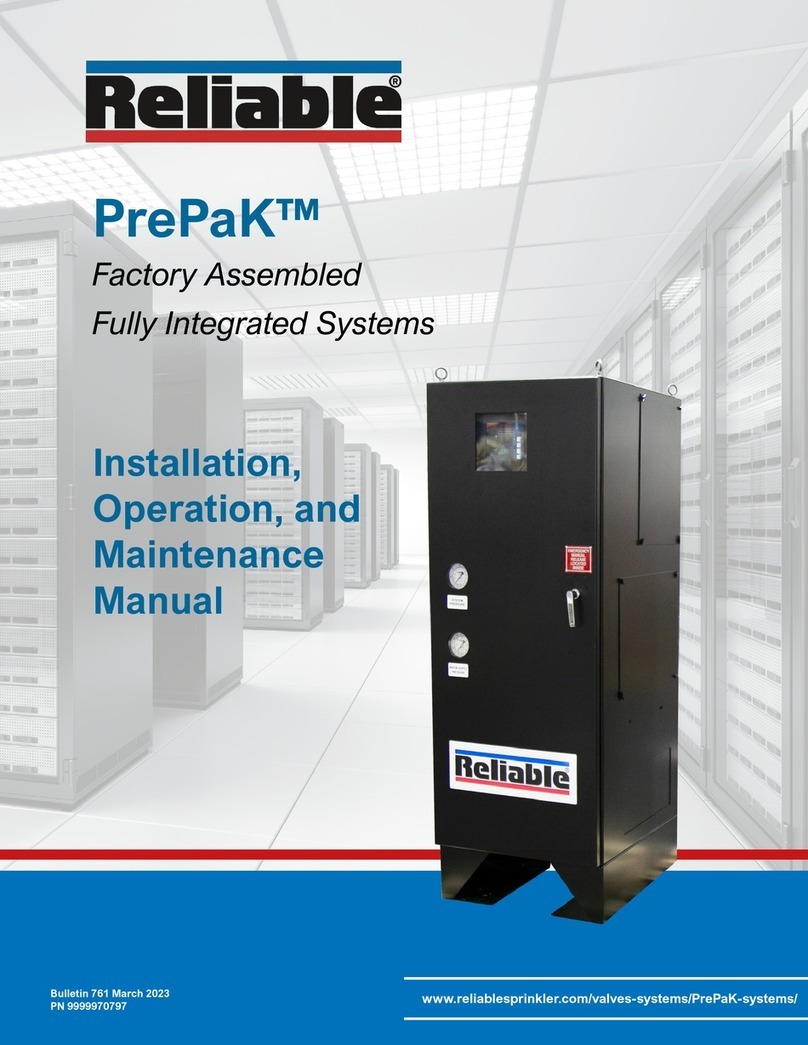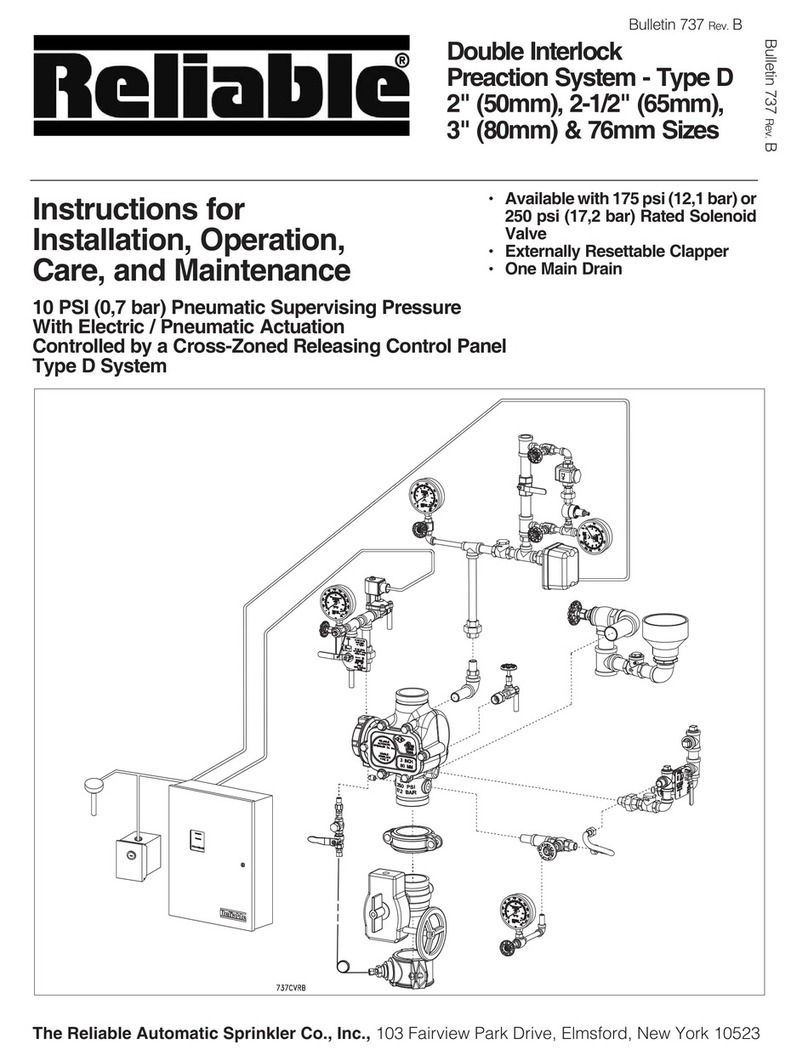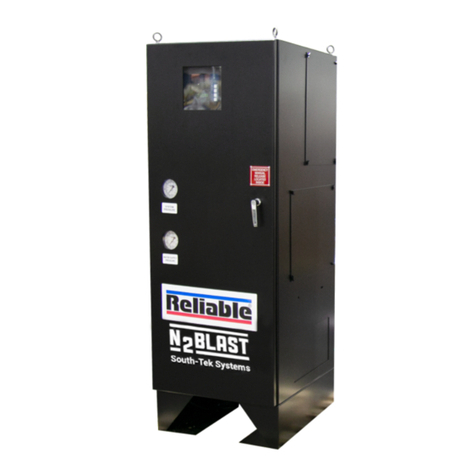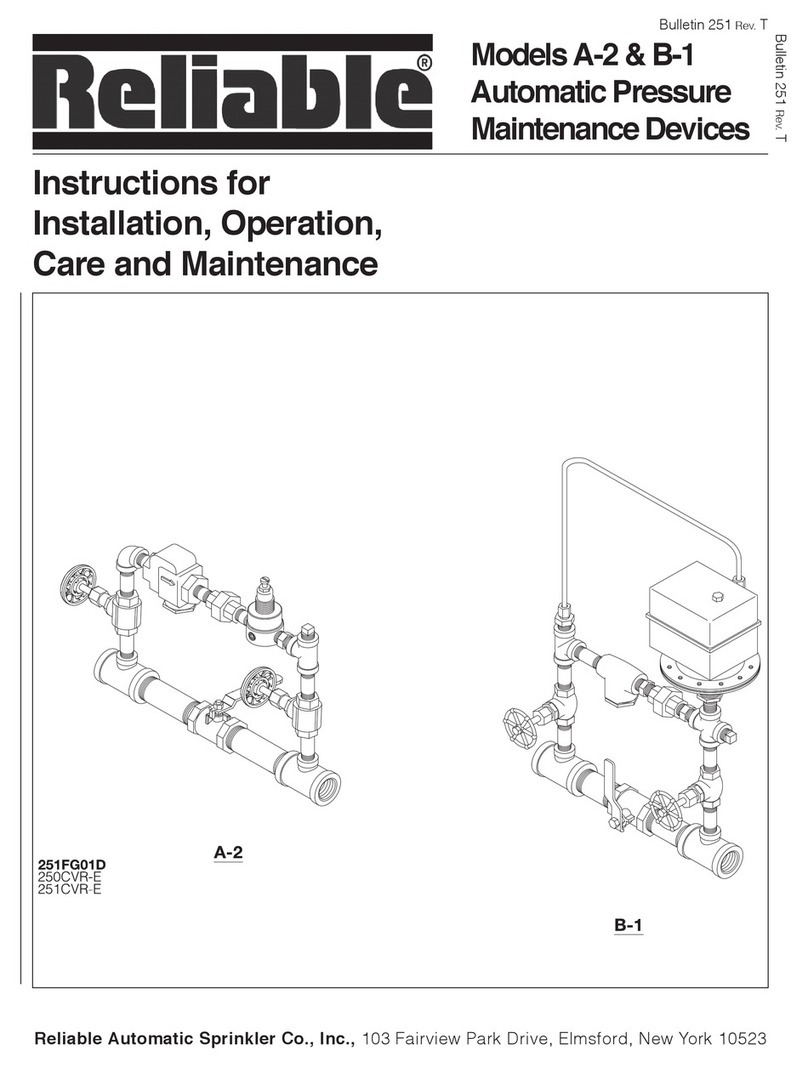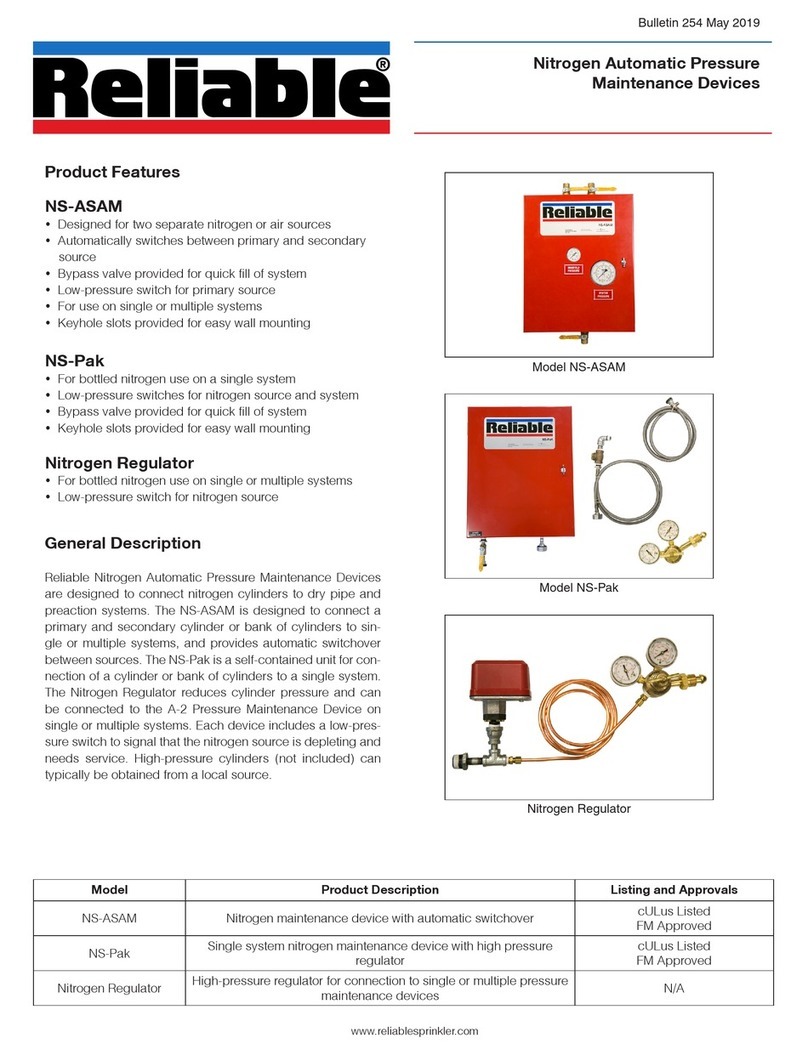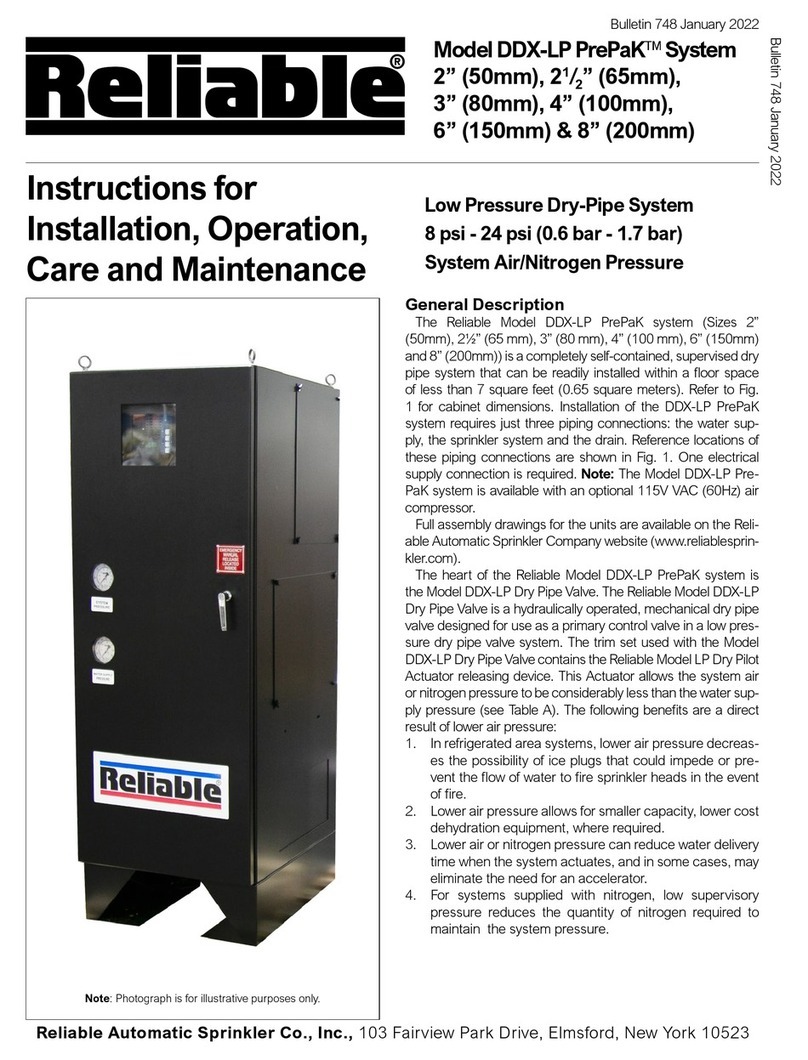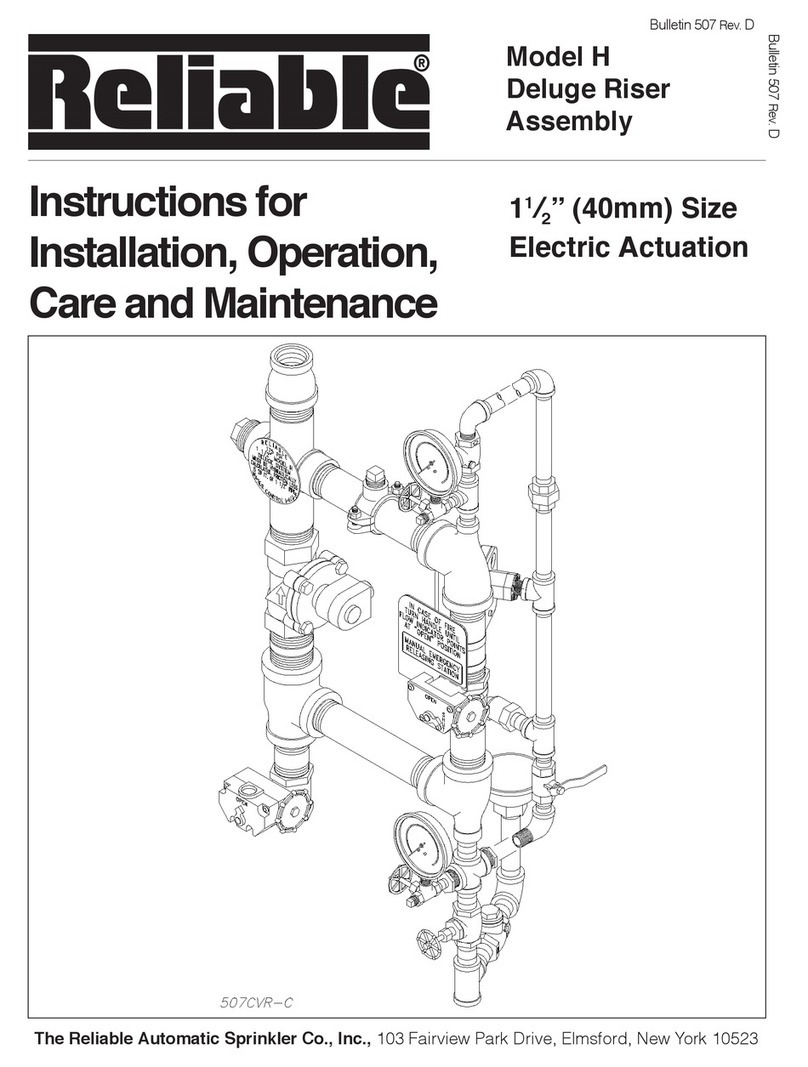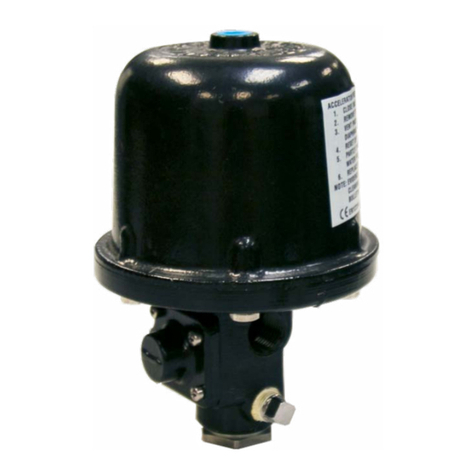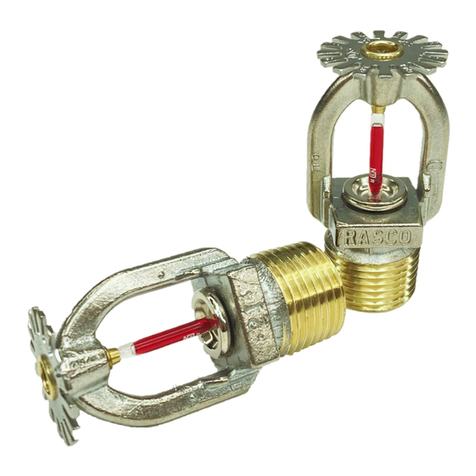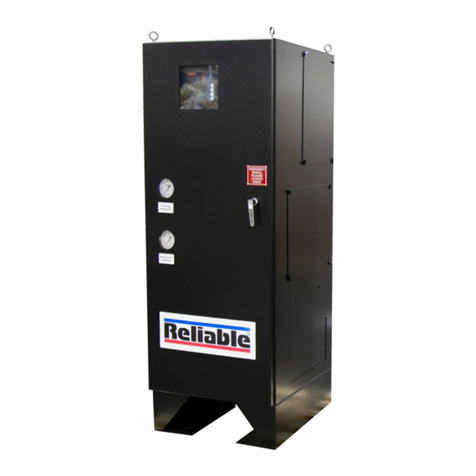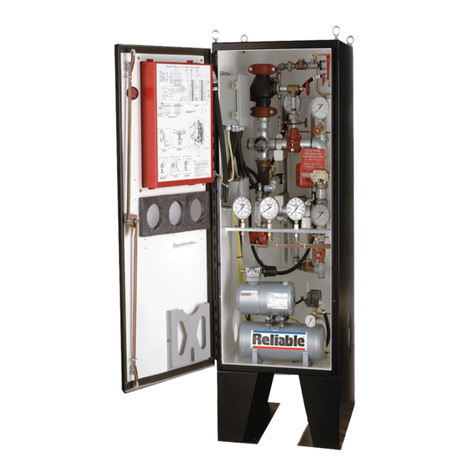
General Description
The Reliable Model H 1½²(40mm) PrePaK is a com-
pletely self-contained, supervised preaction system that
can be readily installed within a floor space of four square
feet. Installation of the PrePaK (not including exterior de-
vices, i.e., detectors and alarm bells) requires just three
piping connections: a 1½²(40mm) supply line, a 1½²
(40mm) system line, and a ¾²(20mm) drain line. Refer-
ence locations of these piping connections are shown in
Figure 1. Also, two 120 VAC electrical supply connections
are required.
The Reliable Model H 1½²(40mm) PrePaK contains the
following components within its 64²Hx24²Wx24²D
(1625mm H x 610mm W x 610mm D) gauge 12 steel
enclosure:
•One Reliable Model H 1½²(40mm) Deluge Riser As-
sembly (See Reliable Bulletin 507).
•One Reliable Model A-2 Pressure Maintenance Device
(See Reliable Bulletin 251).
•One Reliable Model G 2½²(65mm) Right-Check
Valveäw/ Preaction Trim Kit (See Reliable Bulletin
806).
•One Gast Model1 1HAB-11T-M100X 16HP Tank-Mounted
Air Compressor with 2 Gallon (7.6 liter) tank (See Reliable
Bulletin 707).
•One Potter Model PFC-4410 Fire Alarm / Releasing
Panel (See Potter Manual #5403527).
•All required fittings, gauges, electrical connectors, and
electrical devices to utilize the system in single interlock,
single interlock cross-zoned, double interlock, and dou-
ble interlock cross-zoned applications.
The Reliable Model H utilizes the Potter Model PFC-4410
Fire Alarm / Releasing Panel. This fully programmable, mi-
croprocessor based releasing panel is Underwriters Labo-
ratories, Inc. Listed and is in compliance with NFPA 13 and
NFPA 72. Because the PFC-4410 is totally zone and output
programmable, the Reliable Model H PrePaK can be uti-
lized in four different preaction applications without having
to rewire any of the factory installed devices. Once the pre-
viously described connections are completed, the 24 VDC
detectors, output devices, and relay contacts may be con-
nected to achieve the desired system implementation.
The Model H PrePaK can be used in both single and
double interlock applications. Reliable Single and Double
Interlock Preaction Systems are designed for water sensi-
tive areas, which require protection from inadvertent water
flow into the sprinkler system piping.
The major benefits of a single and/or double interlock
preaction system, when compared with a wet pipe system,
are as follows:
A. A fire alarm sounds prior to the flow of water from a sprin-
kler, which may enable extinguishing the fire by
handheld means before the operation of any sprinkler
head occurs.
B. An annunciator signals whenever the integrity of piping
or sprinklers is accidentally or intentionally disturbed;
however, no water flow or water damage will result at that
time.
C. Speedy detection and an early fire alarm are provided
by fire detectors, without the delay associated with water
delivery time in the event of a fire. Note that with a wet
pipe system, the fire alarm is delayed until after water has
begun flowing from an operated sprinkler head.
In single interlock applications, one electrical detector
senses the presence of fire, thereby causing the electrical
2.
releasing control panel to activate fire alarm devices and
latch the solenoid releasing valve in the open position.
Note that arranging detectors in a cross-zoned pattern will
require operation of two detectors before the solenoid
valve can open (Note: Cross-zoned detection systems
are not permitted in New York City and are not Factory Mu-
tual Approved). The solenoid valve, when closed, is pre-
serving supply water pressure in the inlet of the Reliable
Model H Deluge Riser Assembly. Actuating the solenoid
valve releases that water pressure, allowing water flow into
the sprinkler system in readiness for the subsequent oper-
ation of a sprinkler.
To fully operate a single interlock system with
cross-zoned detection, two separate electrical detection
systems must activate and a sprinkler must open. During
the early stages of a fire, smoke or heat activates the first
detector, which causes the control panel to produce a lo-
cal alarm and an alarm at the main fire alarm panel. Electri-
cal relays inside the releasing control panel can be used to
shut down air moving equipment or activate security
doors and other electrical devices when the panel goes
into this first alarm condition. Subsequent activation of a
second, nearby or adjacent detector, on a separate de-
tection system, will cause the panel to energize the sole-
noid valve open and release water into the sprinkler
piping. Water flowing into the sprinkler piping will simulta-
neously produce water pressure that causes the transfer
of contacts in the pressure switch mounted in the riser
assembly, thereby activating a water flow alarm device.
The flow of water into the sprinkler piping effectively con-
verts the dry system into a wet pipe system. In the event
the fire subsequently produces sufficient heat to operate a
sprinkler head, water will flow from that sprinkler, control-
ling the fire.
To flow water into a double interlock preaction system,
two events must take place. A fire detection device
must operate, and a pressure switch must be operated
by the loss of system pressure (sprinkler operation).
These two signals, both an electric signal and a pneu-
matic signal, must coexist at the releasing control panel,
which only then will energize the solenoid releasing
valve, causing water flow into the system and out of the
open sprinkler(s).
In the event that the system piping is ruptured or a
sprinkler head is accidentally opened, the system pres-
sure switch will operate and an alarm will sound. The
riser assembly, however, will not release water since the
solenoid valve remains closed due to only one input into
the control panel.
When using the Reliable Model H PrePaK in either sin-
gle or double interlock applications, the sprinkler sys-
tem is pressurized (supervised) with air provided by the
16HP tank-mounted air compressor and is monitored by
the system pressure switch.
A hydraulic manual emergency releasing station is
standard equipment in the Model H PrePaK. It is identi-
fied by a nameplate attached above the releasing valve.
Preaction trim provides a by-pass drain line and the air
supply required to supervise the preaction system at 10
psi (0,7 bar). This trim includes a UL Listed Reliable
Model G Right-CheckäValve installed with rigid
grooved pipe couplings.
Approvals
The Reliable Model H 1½²(40mm) PrePaK Preaction
System is Underwriters Laboratories Inc. (UL) Listed and
UL Certified for Canada*, as an assembled unit, in the

